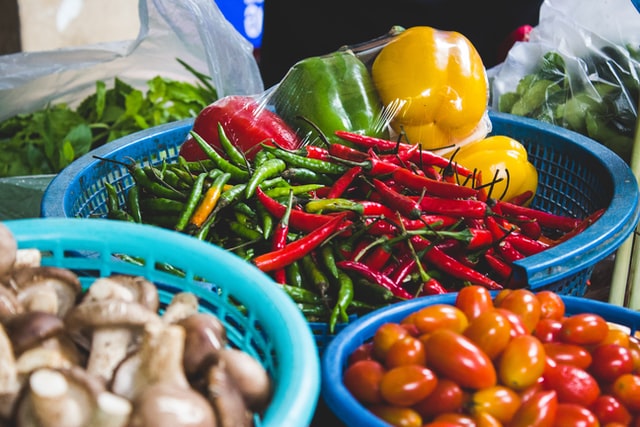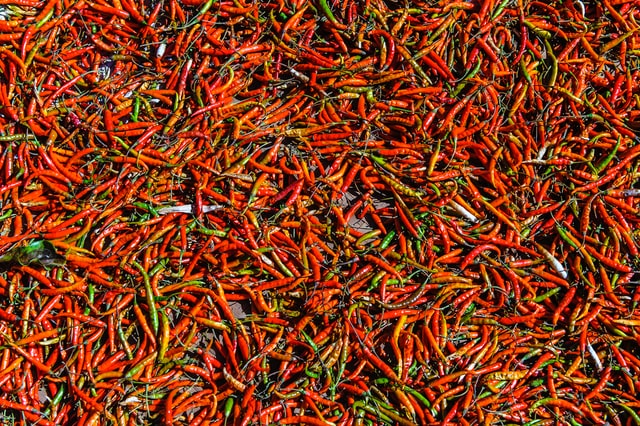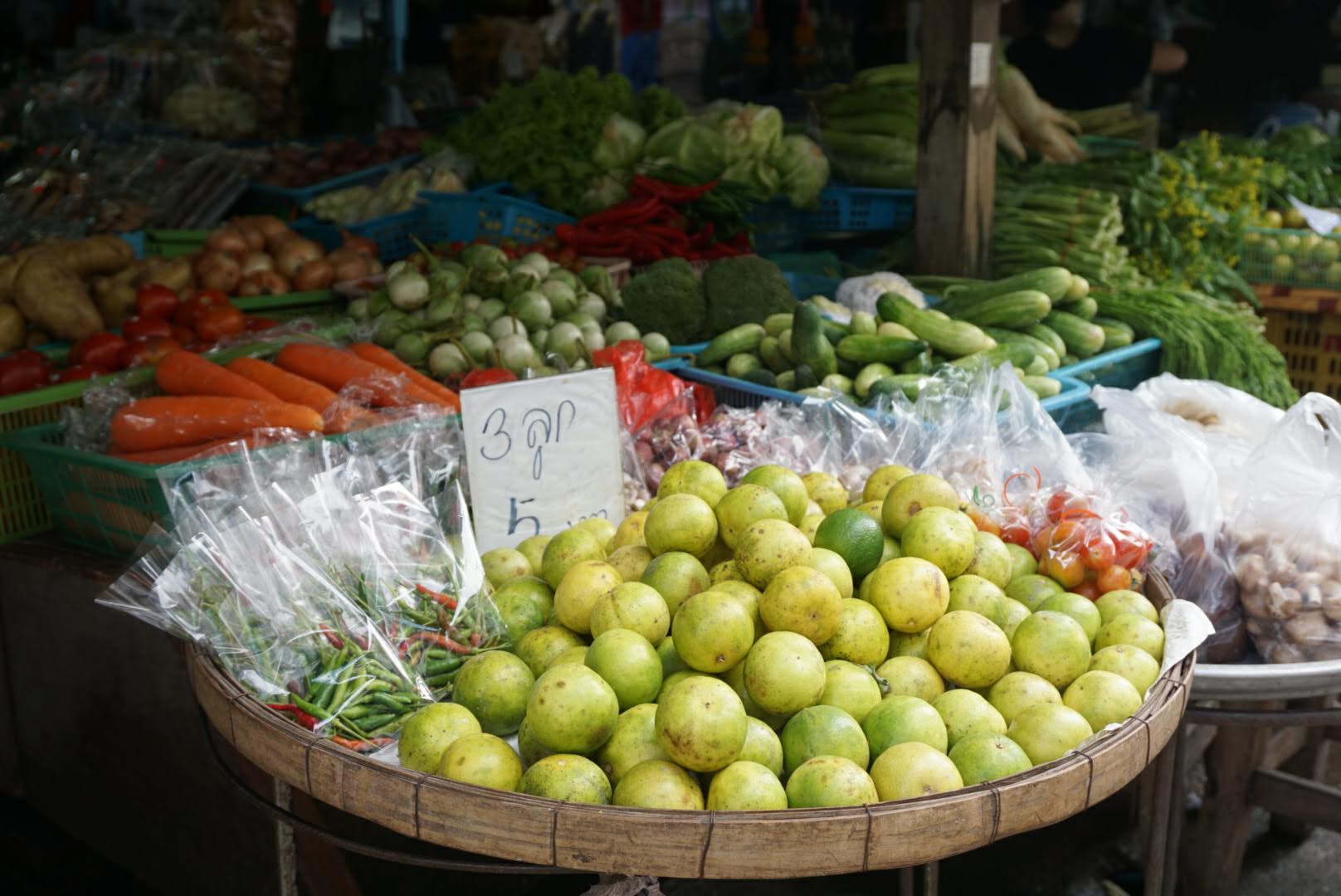All About the Thai Bird’s Eye Chili

Originally brought to Thailand in the 1500s by Portuguese explores, the chili pepper is an integral part of many Thai dishes. Chilis bring the heat to Thai food, and its reputation for spicy dishes comes mainly from a particular variety known as the Thai bird chili or bird’s eye chili.
Thai bird’s eye chilis are around two inches long and they come in a variety of colors, which represent different levels of ripeness. Fully green means that the chili is unripe. These chilis have a sharper, snappier, more biting heat to them.
Fully red means that the chili is fully ripened. These chilis have a mellower, more lasting heat to them. For colors in between, it’s more of a lucky dip as to the nature of its heat.
Top Tip #1: The different colors of chili represent different levels of ripeness, and each color has a different taste profile. It’s possible to substitute between red and green chili in a recipe, but it will taste slightly different.
Why Is It Called Bird’s Eye Chili?
It’s called a bird’s eye chili either because it was observed that birds spread the seeds of the chili or that the stem resembles a bird’s eye. The actual origin of the name is not fully verified or known.
Both are plausible because a) birds aren’t sensitive to capsaicin, the chemical that gives chili its heat, so it’s believable that they could spread the seeds and b) well, just look at the stem and compare to a bird’s eye.
It’s worth noting that in the Thai language, they are called prik kee nu (พริกขี้หนู), which means mouse poop chili. This name is more easily verified and explainable because the chili is roughly the size of mouse droppings.
How Spicy is a Thai Chili?

Thai bird chilis measure 50,000 to 100,000 Scoville units. This means they are very hot chili peppers. The scale used to measure the heat level of chilis is the Scoville scale. The number on the scale represents the concentration of capsaicinoids within different types of chili pepper.
For comparison purposes, the Thai bird chili is between 20 and 40 times hotter than your average jalapeno pepper. If you’ve ever put a jalapeno in your mouth and felt a mild tingle, do the same with a bird chili and you will experience more of a furnace.
Capsaicinoids are essentially chemical irritants, which is why they burn your mouth when they come into contact with it. Hot chilis, such as the Thai bird chili, can also badly burn your eyes and sensitive areas, so it’s vital to use gloves when handling them. If you don’t want to use gloves, make sure thoroughly wash your hands with soap and water after handling bird chilis.
A good rule of thumb to remember is that smaller chili peppers typically pack even more of a punch. In fact, in Thailand, there’s a type known as garden mouse dropping chili (พริกขี้หนูสวน) which is smaller and even spicier than the standard Thai bird chilis.
Another unique aspect to remember is that the heat level of chilis differs depending on the batch you buy. I’ve often bought some Thai bird chilis that didn’t seem too hot at all. I could add 5 or 6 of them to my spicy papaya salad and not feel much burn. Then there have been other batches in which one chili was enough to send my entire mouth erupting in flames that can only be extinguished with a cold glass of milk.
Top Tip #2: Taste your chilis before cooking with them because the heat level can vary wildly.
Bird Chili Use in Thai Cooking

Thai people love their spicy food and they love their chilis! This is perhaps what drew me to Thailand in the first place. Since I was young, I’ve sought out spicy food. I remember buying a packet of green chili peppers in a local supermarket and challenging a friend to eat one. I emerged victorious easily.
In fact, one of the main signs of the Thai love for chilis comes when you order a simple 20 baht portion of sausage from your average road-side stall. Served in a plastic bag with your sausage will typically be two or three bird eye chilis to eat whole with the sausage. Yum!
In terms of dishes, it’s very common to add Thai bird chilis to curry pastes, including red curry paste. If you want to make authentic papaya salad, you’ll need to use prik kee nu aswell. If you don’t like it too spicy one chili should give a tingly heat without overwhelming your tastebuds.
There are some Thai dishes for which you can use bird’s eye chilis or a milder type of chili, depending on how hot you like your food. For example, several popular stir-fried Thai dishes start with a base of garlic cloves and chili in a mortar, lightly pounded. If you’re like me, you’ll use the bird chili because you’re a stickler for heat. If you don’t like heat much, opt for something like a spur chili, which is what many Thais also do.
Soup is another very common dish in which Thai bird chilis are used. Many soup recipes call for dried chilis instead, though. You can buy a 3.5-oz packet of dried Thai bird chilis here.
Storage Tips
Bird chilis, and most other types, thankfully freeze very well. If you want to use frozen chilis, you don’t need to wait for them to thaw. I will typically chuck them into a mortar for any dishes that need them and bash them up a bit to bring them back to life. You can wait for them to thaw if you want; it’ll happen quickly at room temperature.
Closing Thoughts
That just about wraps up everything I wanted to talk about in terms of Thai bird chilis. You now know about their flavour, heat level, and the types of Thai dishes in which you can use them. Let me know in the comments below how spicy you like your dishes. I hope this has been useful for you.
I lived in Thailand for a few years during my 20s during which time I fell in love with Thai food. Along with my Thai partner, I cook and eat tasty Thai dishes 3 or 4 times per week. I’m here to bring you recipes, Thai food tips, and suggested cookware for making Thai food.
